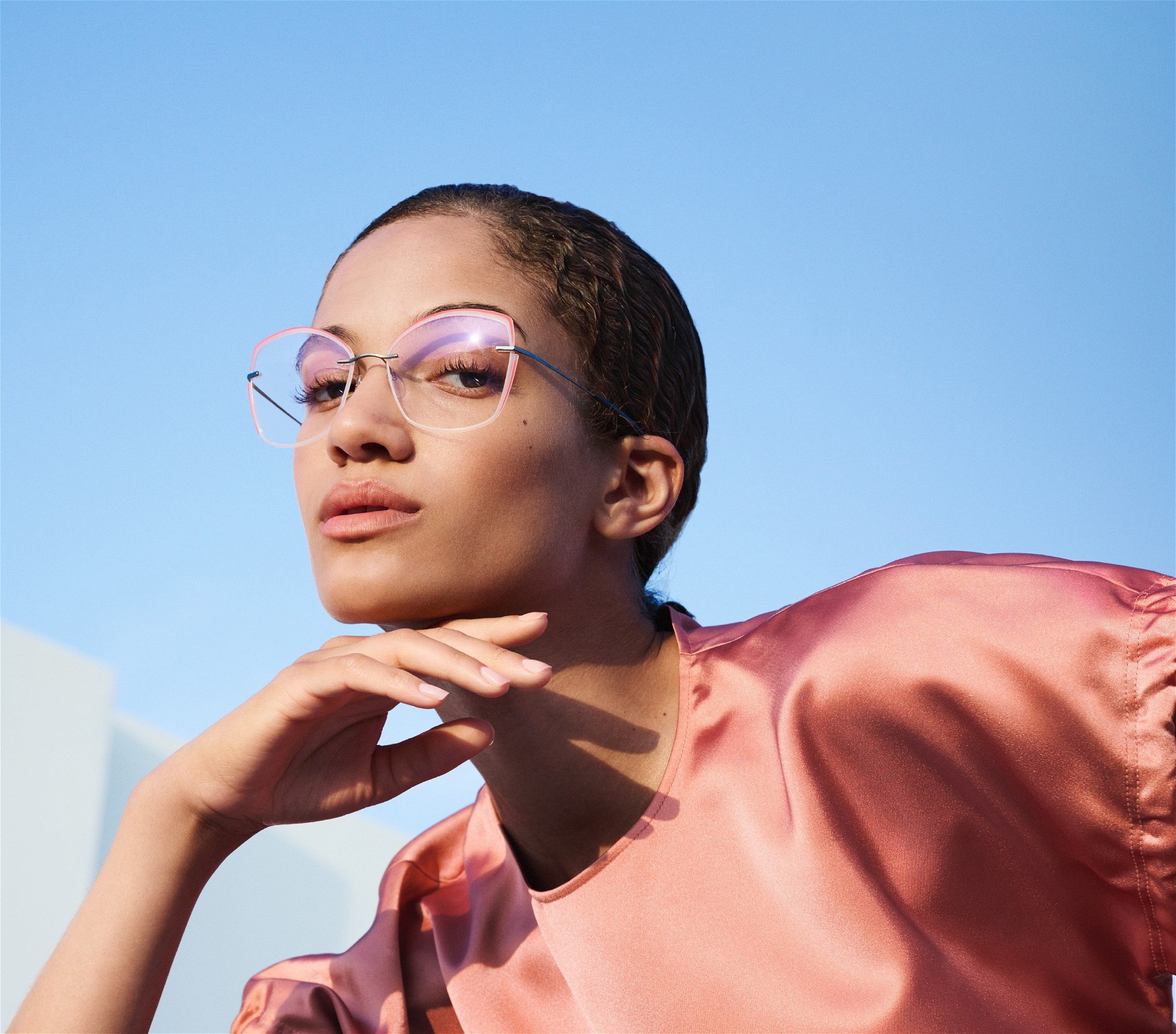mieyewear Standing OutOffice Frames Shed Their Conservative Image Has the work from home shift prompted consumers to step out a little in their choice of professional eyewear? Wanting to stand out in a screenful of meeting participants is as good a reason as any to encourage your customers to introduce a little adventure into their work frames this season. WRITER Michelle Hauschild TMA LaLigne: Mimo Struktur: ProOptics With the last of the sand shaken off our shoes, and the obligatory greetings of ‘Happy New Year’ finally starting to peter out, February is the time when businesses ramp up. Your clients, who have used last year’s optical health fund benefits for a new pair of sunnies before the December expiry, may be looking to use their 2023 benefits on an updated pair of professional frames. BUT WHAT ARE PROFESSIONAL FRAMES? The term ‘professional frames’ perhaps conjures up images of conservative, perhaps somewhat boring, designs that some optometry stores might hide in a bottom drawer, keeping their displays for edgier options. But that’s changing as we become less tethered to the traditional office environment. As well as the increase in the number of people working from home (WFH), we’re also moving into co-working spaces. And don’t forget work wear also covers those who may need safety frames, outdoor eye protection, even sports spectacles. Rowan Carson, Director of Temple Eyewear in Bulimba, an inner suburb of Brisbane, says it is obviously important to understand what type of work the customer is doing. “ You have to understand where, when and what they are using their eyewear for to understand what kind of lens they need, and that’s part of a two-fold discussion while selecting frames.” “People do make decisions about what they want to wear at work and what they want to wear when they play, but we don’t choose frames that way, we choose frames to suit faces and personalities, it’s the lens choice that often separates tasks,” Mr Carson says. “There are certain segments of professional workers who have the desire to have a particular look when they’re in the office, and a particular look when they’re not, but neither of those need to be dull.” STANDING OUT He says people “don’t want to have the same glasses on as their patients, or their customers, or their workmates”. “It doesn’t necessarily need to be the brightest coloured or the shiniest frame, but they definitely want a different shape or something that is unique about the product. Quality also matters for our customers.” And Mr Carson believes this trend has been accelerated by the rise of WFH, and the increase in online collaboration. “People are still spending time in an office, but that office is highly likely to be 50% of the time in your own house. “So, there’s an awful lot of people sitting on Zoom, on screens and cameras. And certain eyewear can look like a black blob or can disappear. So, eyewear choice around how people look when they’re on screen is really important because a pair of glasses can make you look just like everyone else.” READING YOUR CLIENTSOwner / Dispenser Mark Holloway, from Eye Can C, says the type of work frames required by customers will very much depend on geographic location. He says customers at his practice, in the Melbourne coastal suburb of Williamstown, have a more “relaxed, chill pace” and that’s reflected in their choice of frames. “It’s more like a country town in the city, and very different to the CBD. People are more intense in the city,” Mr Holloway says. When connecting with his customers, Mr Holloway encourages them to “try things they normally wouldn’t go for” when they are selecting frames, and choose something that reflects their personality. “We’ve got stuff that’s a bit out there. It’s not way out there, but it’s not conservative. “I’ve actually got draws full of frames. I get the cool stuff out on display, but I can still cater for the no frames look if that’s what customers really want.” Mr Holloway says when fitting customers, he makes suggestions based on their features, hair, skin tone and eye colour. He says while some people are hesitant to try a new frame shape or colour, it is usually only because they’ve created an image of themselves and need time to get used to something different. “It’s like bad haircut that will look alright in a couple of weeks. People will adapt (to new frames) in that time.” A GENDER DIVIDEMr Holloway says in his practice, where clients have a higher disposable income, men still tend to “get the pair for work that is for everyday while women are a bit more fashion conscious” and frequently buy multiple frames. “The face is your first presentation, so why not have different glasses for different moods, for weekends or going out, and for work,” Mr Holloway says. Mr Carson finds a similar trend in his practice, with men “generally more likely to be in the one pair space”. However, he says he’s found men are starting to seek “more interesting things – they want more interesting design, shape and colour”. “ … eyewear choice around how people look when they’re on screen is really important because a pair of glasses can make you look just like everyone else ”He said brands like Talla, Blake Kuwahara and newcomer to Australia, Tavat, have piqued men’s interest at his store. “They might buy one pair every year and end up with a couple of looks over a two-year period”, with the purchase often driven by an interest in new lens technology.

